Saludos cálidos a la comunidad HIVE. Siempre agradecido por dedicar una porción de su valioso tiempo para leer mis pequeñas notas. En esta oportunidad quiero compartir la experiencia que tuve junto con algunos compañeros del teatro, cuando le dedicamos una modesta propuesta escénica, a una figura señera del arte en Venezuela; se trata del Maestro Jesús Soto: Un muy corto relato de su vida -hay suficiente información en todo tipo de medios- el incentivo para homenajear con el teatro al Maestro y el breve resumen de la obra de teatro: Soto en Tres Tiempos.
Warm greetings to the HIVE community. I am always grateful for dedicating a portion of your valuable time to read my little notes. In this opportunity I want to share the experience I had along with some theater colleagues, when we dedicated a modest scenic proposal, to an outstanding figure of the art in Venezuela; it is about the Maestro Jesús Soto: A very short account of his life - there is enough information in all kinds of media - the incentive to pay tribute to the Maestro with the theater and the brief summary of the play: Soto en Tres Tiempos.
SOTO EN TRES TIEMPOS | SOTO IN THREE TIMES
Semblanza de un genio | A portrait of a genius
En el año 1.923-5 de enero- nace en el sector “Perro Seco”(Según algunas fuentes no oficiales) de Ciudad Bolívar; capital del estado homónimo; el gran artista plástico Jesús Rafael Soto.
Probablemente de niño; como cualquier otro, corría hacia la rivera del gran río padre “el Orinoco” y junto a sus compañeros de juegos, se divertía con las pichas (canicas) “40 matas” y otros. Sin Embargo, el niño Jesús Soto tomaba una pequeña rama y en la arena ribereña plasmaba círculos, cuadrados, rostros, paisajes; etc. También pintaba con colores (lápices) en papel, paredes, y todo cuanto estuviera al alcance de su mano. Desde pequeño Soto fue amante de la música, siendo adolescente, se enamoró de la guitarra.
In the year 1923 - January 5 - was born in the sector "Perro Seco" (according to some unofficial sources) of Ciudad Bolivar, capital of the state of the same name; the great artist Jesús Rafael Soto..
Probably as a child; like any other, ran to the banks of the great river father "the Orinoco" and along with his playmates, had fun with the pichas (marbles) "40 matas" and others. However, the child Jesús Soto took a small branch and in the riverside sand he painted circles, squares, faces, landscapes, etc. He also painted with colors (pencils) on paper, walls, and anything else he could get his hands on. Since he was a child, Soto was a music lover, and as a teenager, he fell in love with the guitar.
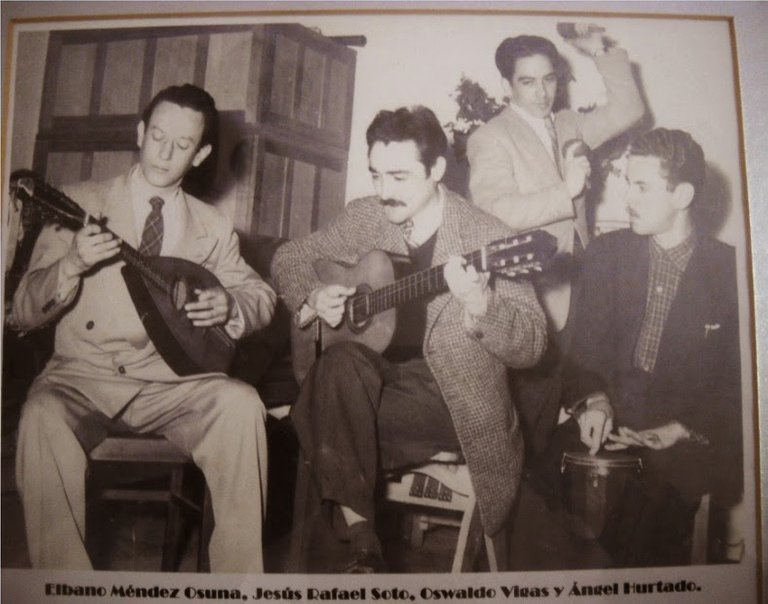
En 1942-a los 19 años- obtiene una beca por el estado Bolívar y se va a la Escuela de Artes Plásticas y Aplicadas, en Caracas. Allí se consigue y hace amistad con Carlos Cruz Diez, Alejandro Otero (también Guayanes- nativo del Manteco municipio Piar, estado Bolívar) y Pascual Navarro. Una vez graduado de Arte Puro, fue nombrado director de la escuela de Bellas Artes de Maracaibo e impartió clases en la escuela normalista y el liceo Baralt, en la misma ciudad.
Abreviando tenemos, que una vez instalado en Europa -Francia como meta y espacio de creación- el Maestro Soto, se suma a las corrientes novedosas aplicadas a las artes de la forma, el color y del espacio. Con los años fue agudizando su percepción sobre el “efecto o patrón Mauré” descubriendo que éste siempre estuvo a su alcance; en la naturaleza. Lo cinético de Soto está consustanciado al río padre: El Orinoco. La maduración de las ideas, la experiencia adquirida, los estudios intensos y agotadores; dan los frutos: Surgen “Los Penetrables”, culminación prodigiosa del movimiento, el espacio, el color y el sonido. Utilizando diferentes materiales para juntar todas esas dimensiones, Soto logra transcender las dimensiones ópticas, táctiles y sonoras; obligando al visitante de su obra, a dejar la mansedumbre del espectador, para convertirse en un protagonista, re-creador impelido a introducirse en esa grades ventanas mágicas del arte universal; construidas por Maestro Jesús Soto.
In 1942-at the age of 19- he obtained a scholarship from the state of Bolivar and went to the Escuela de Artes Plasticas y Aplicadas, in Caracas. There he became friends with Carlos Cruz Diez, Alejandro Otero (also Guayanes - native of Manteco, municipality of Piar, Bolivar state) and Pascual Navarro. Once he graduated from Arte Puro, he was appointed director of the Fine Arts School of Maracaibo and taught at the Normalist School and the Baralt High School in the same city.
In short, once installed in Europe -France as a goal and space of creation- Master Soto joined the new currents applied to the arts of form, color and space. Over the years he sharpened his perception of the "Mauré effect or pattern", discovering that it was always within his reach; in nature. Soto's kinetic is consubstantiated to his father river: the Orinoco. The maturation of ideas, the acquired experience, the intense and exhausting studies; give the fruits: "Los Penetrables", prodigious culmination of movement, space, color and sound. Using different materials to join all these dimensions, Soto manages to transcend the optical, tactile and sonorous dimensions; forcing the visitor of his work, to leave the meekness of the spectator, to become a protagonist, re-creator impelled to enter in that magical grades windows of the universal art; constructed by Master Jesús Soto.
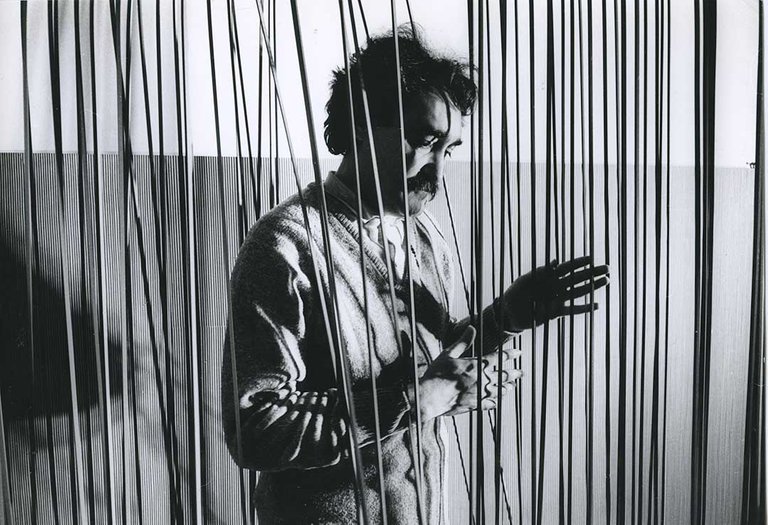
Cómo surgió, Soto en Tres Tiempos | How it came about, Soto en Tres Tiempos
Hace unos diez años -tal vez más- la fundación teatro de títeres Jau Jau, se trazó la meta de dramatizar unas semblanzas de la vida y obra de algunos artistas Guayaneses de reconocida trayectoria nacional e internacional. En aquella oportunidad escogimos elaborar una propuesta escénica sobre el maestro del cinetismo e inventor de los Penetrables: Jesús Soto.
Todo comenzó en una de las dinámicas que acostumbramos a realizar previas a las prácticas de los talleres de iniciación teatral, orientada a estudiantes y docentes de educación media. El equipo facilitadores de la fundación teatro de títeres Jau Jau, había elaborado un conjunto de palabras y frases generadoras o de desarrollo crítico, para compartirlos con los estudiantes.
Una de las palabras o frase fue: Jesús Soto, artista plástico. Lamentablemente solo dos jóvenes pudieron decir que era o había sido, un pintor de Venezuela; ninguno supo explicar donde nació o murió y mucho menos, en cual rama de la plástica se destacó.
About ten years ago -maybe more- the Jau Jau Puppet Theater Foundation, set the goal of dramatizing some portraits of the life and work of some Guayanese artists of recognized national and international trajectory. In that opportunity we chose to elaborate a scenic proposal about the master of kinetic art and inventor of the Penetrables: Jesús Soto.
It all began in one of the dynamics that we usually do prior to the practices of the theatrical initiation workshops, oriented to students and teachers of secondary education. The team of facilitators of the Jau Jau Puppet Theater Foundation had elaborated a set of words and phrases for critical development to share with the students.
One of the words or phrases was: Jesús Soto, plastic artist. Unfortunately, only two young people could say that he was or had been a painter from Venezuela; none of them could explain where he was born or died and much less, in which branch of plastic art he excelled.

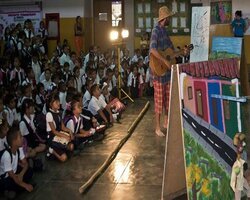
Esa situación nos llamó poderosamente la atención, no solo para hacer críticas a la poquísima información que tienen nuestros estudiantes (En todos los niveles) sobre los artistas nacionales, regionales, locales y la responsabilidad del sistema educativo nacional; también fue un alerta a nosotros mismos: Teníamos que hace algo, encontrar la manera de que, a través del teatro (Todas sus acepciones) difundir y dar a conocer a los hombres y mujeres; quienes han enriquecido con sus talentos artísticos o científicos, la tierra Guayanesa y a Venezuela en general.
Luego de irse los muchachos y los profesores, nos quedamos a discutir el asunto, pasadas dos horas decidimos que montaríamos una obra de teatro en homenaje al Maestro Jesús Soto.
This situation called our attention, not only to criticize the very little information that our students (at all levels) have about national, regional, local artists and the responsibility of the national education system; it was also an alert to ourselves: We had to do something, to find a way, through the theater (all its meanings) to spread and make known the men and women who have enriched with their artistic or scientific talents, the land of Guayana and Venezuela in general.
After the boys and the teachers left, we stayed to discuss the matter, and after two hours we decided that we would stage a play in homage to Master Jesús Soto.
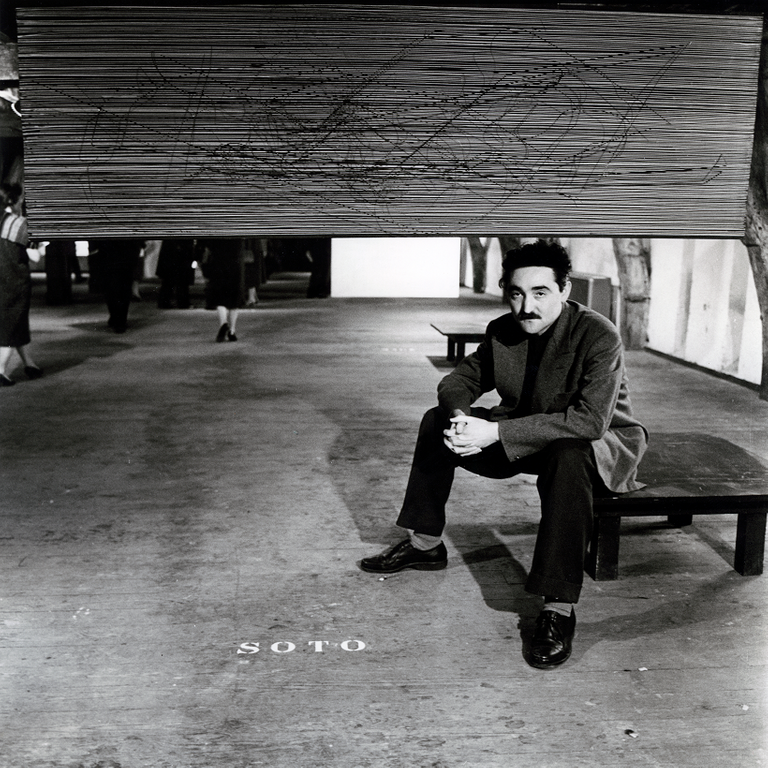

El legado de los grandes creadores del arte, entre otras bondades; hacen sin duda alguna, que nuestro transito por la vida, merezca la pena vivirla. Hasta la próxima entrega.
The legacy of the great creators of art, among other benefits, undoubtedly make our journey through life worth living. Until next time.
Referencias | Sources
https://esacademic.com/dic.nsf/eswiki/835503
https://es.wikipedia.org/wiki/Museo_de_Arte_Moderno_Jes%C3%BAs_Soto
https://es.wikipedia.org/wiki/Jes%C3%BAs_Rafael_Soto
https://www.wikiart.org/es/jesus-rafael-soto
https://www.venezuelatuya.com/biografias/jesus_soto.htm
https://iamvenezuela.com/2017/10/museo-de-arte-moderno-jesus-soto/
Audiovisual homenaje a Jesús Soto: No Tengo Prisa, de Chuchito Sanoja. Caracas 2.006
Entrevista a Ángel Romero cronista de Upata
Vivencia propia
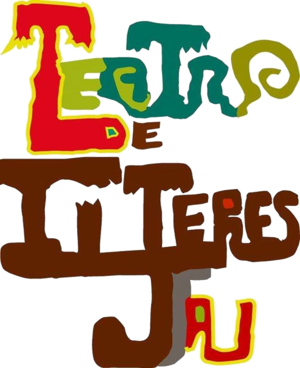


Congratulations @camborio! You have completed the following achievement on the Hive blockchain and have been rewarded with new badge(s) :
Your next target is to reach 40 posts.
You can view your badges on your board and compare yourself to others in the Ranking
If you no longer want to receive notifications, reply to this comment with the word
STOPCheck out the last post from @hivebuzz:
Support the HiveBuzz project. Vote for our proposal!